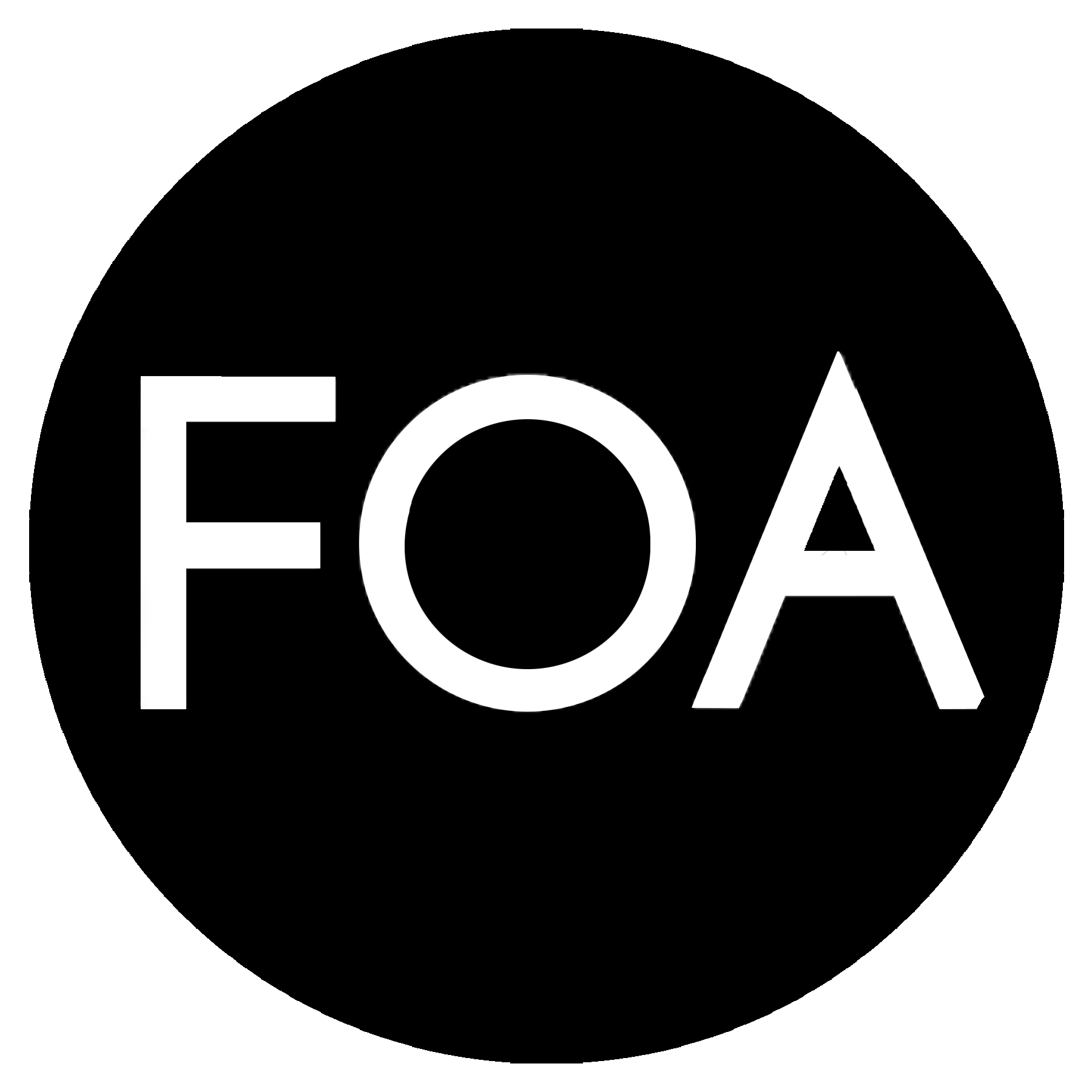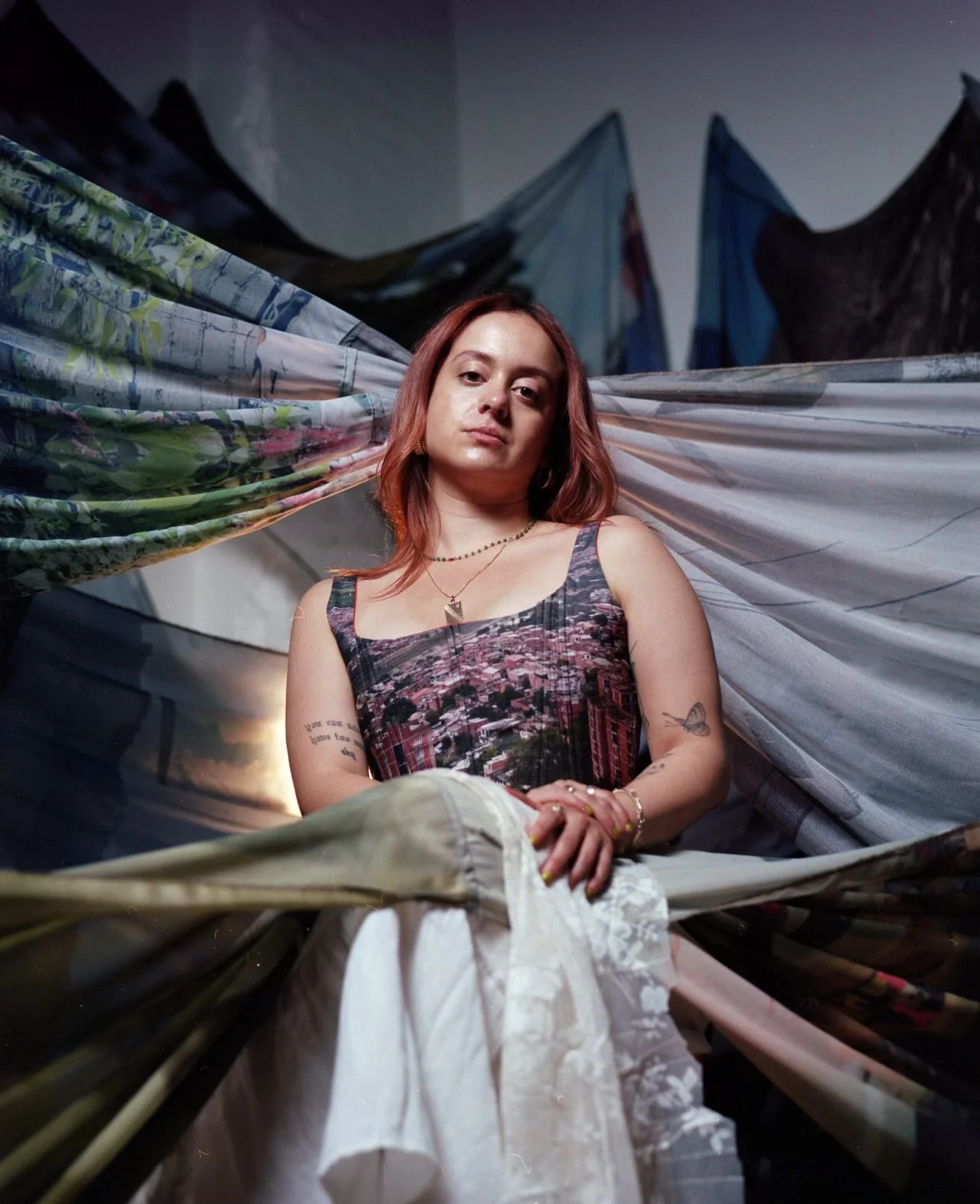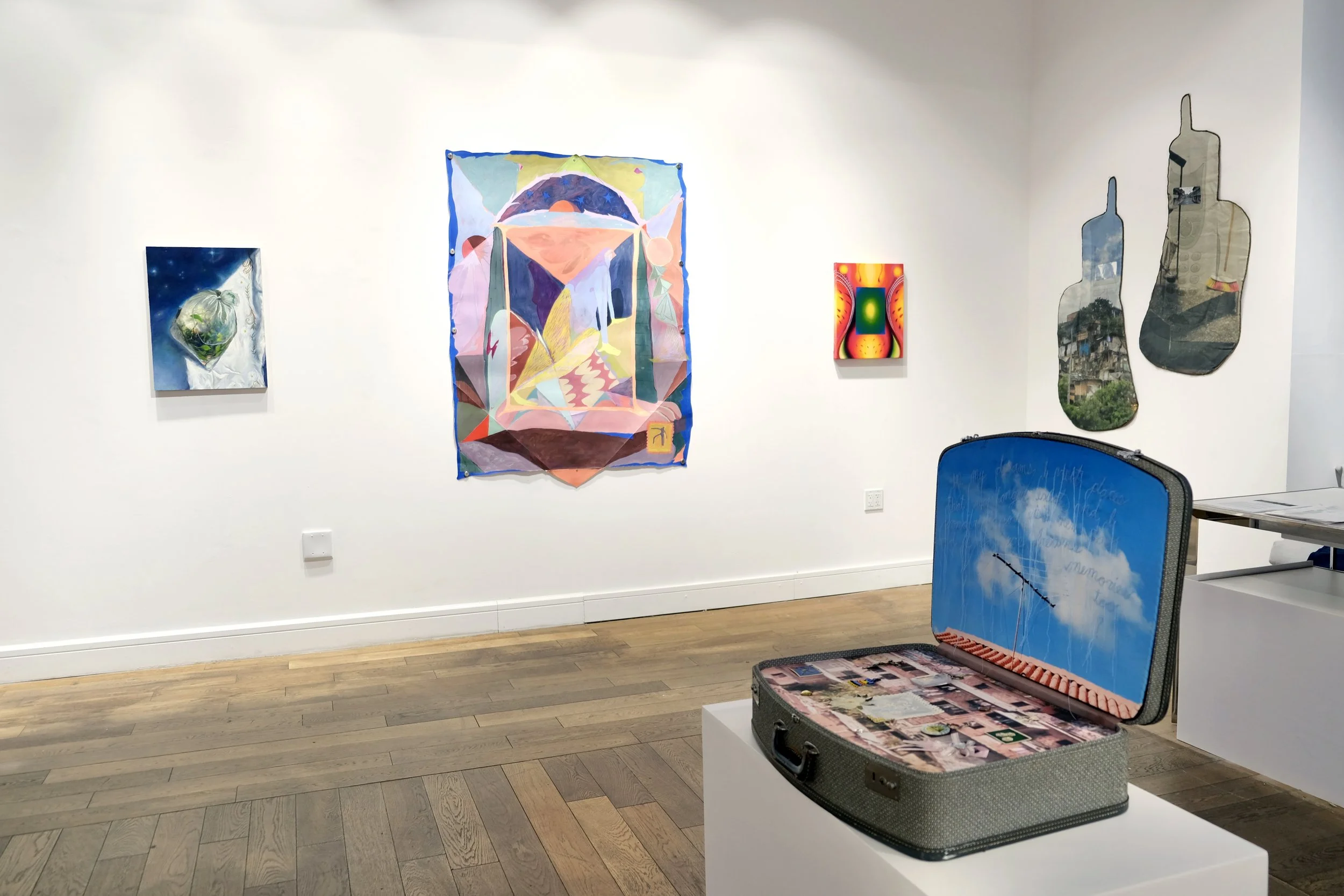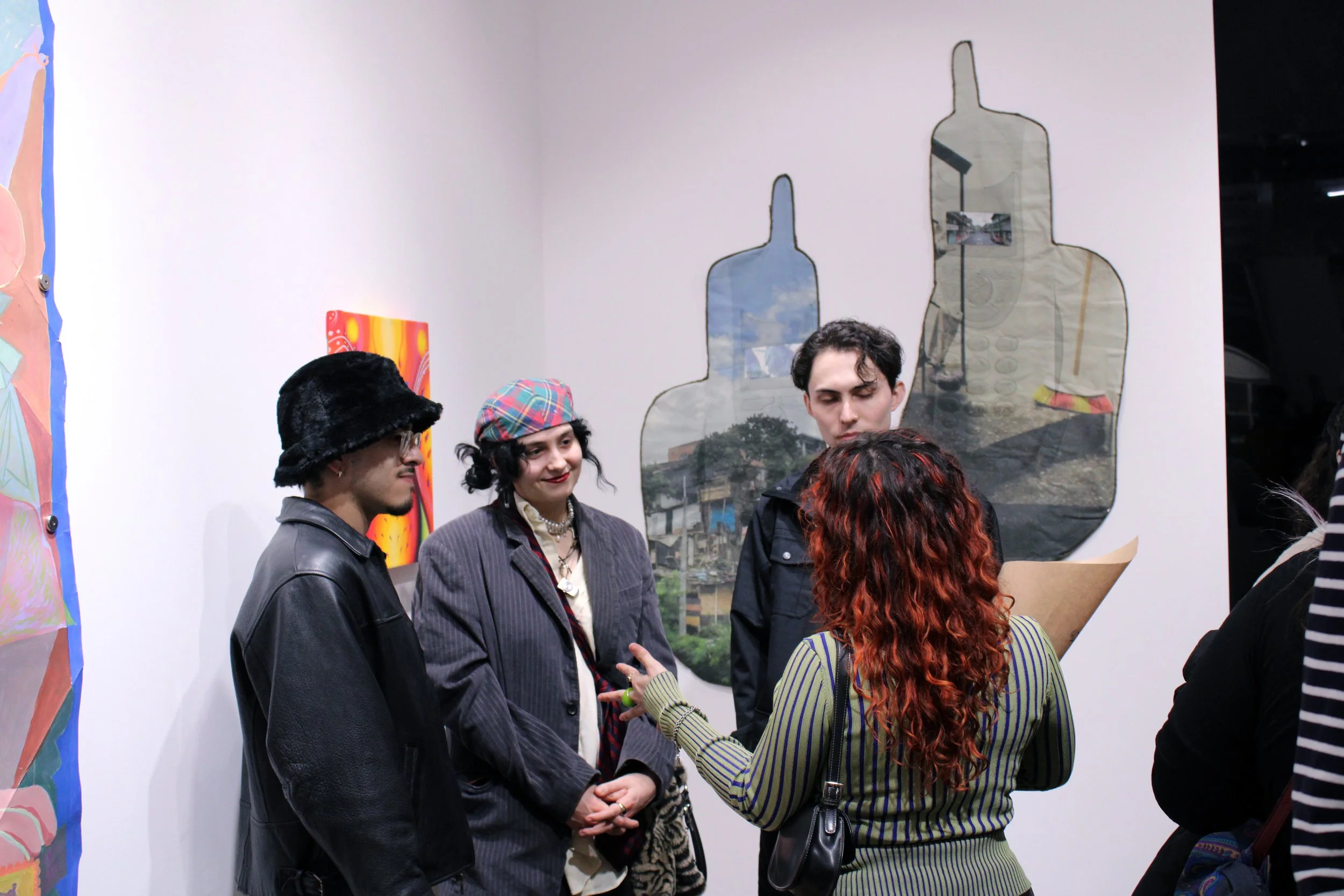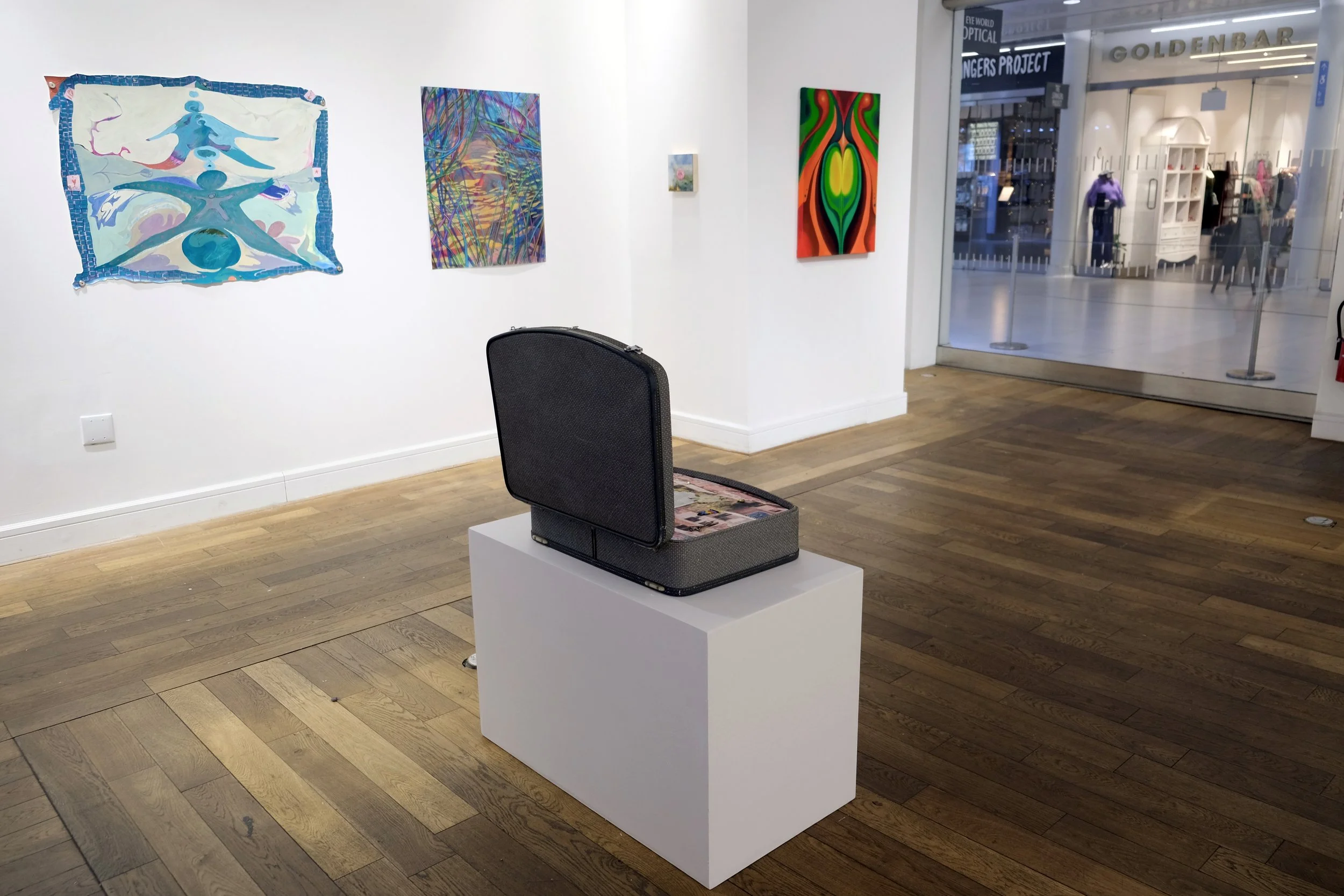Paola de la Calle Unveils New Work In ‘The Psychic Landscape’
Paola de la Calle is a Colombian-American multidisciplinary artist whose work examines home, identity, borders, and nostalgia through the use of textiles, printmaking, and sculpture. In her practice, De la Calle combines photographs sourced from family albums and found images which she prints on textiles, as well as poetic texts, paintings made with coffee instead of paint, and found objects, to mine the aesthetics of nostalgia and examine the socio-political relationship between the United States and Colombia.
She is a graduate of the New York Foundation of the Arts Immigrant Artist Program in 2019 and the lead artist for the Caravan for the Children Campaign as part of her residency with Galeria de la Raza in 2020. She’s a 2022-2023 KALA Fellowship Award recipient and previously an Artist-in-Residence at the Textile Arts Center in Brooklyn, NY. She’s been featured on Hyperallergic’s “A View from the Easel”, NPR, Refinery29, The Boston Art Review, Latina Magazine, and VOGUE among others.
De la Calle is currently working on her second solo show which opens at Art League Houston in May 2024.
INTERVIEW WITH PAOLA DE LA CALLE
Tell us a little bit about yourself and how you came to be an artist?
I came to my practice through the women in my family who all work with their hands in some capacity. My earliest memories include sitting beside my Tia Tata, who worked as a seamstress making leather purses at the Coach Factory, and watching her sew my sister’s Quinceanera dresses and Halloween costumes. In third grade she made me a costume replicating Britney Spears’ dress from the Lucky video. But I didn’t start to see how those moments influenced me until 2019 when I first introduced textiles into my practice. Before that I was printing woodblocks on paper and creating political posters using relief printing techniques inspired by Jose Guadalupe Posada and Ester Hernandez. It was because of printmaking that I moved to San Francisco. My first time visiting the city I walked past a relief print wheat pasted on the corner of 24th and Mission and thought “my people are here”. I decided then and there that I was moving to San Francisco. Six months later I met the artist who made that print (and inspired my move) while assisting two artists paint a mural in Oakland. Though I always practiced art, I never called myself an artist, not until San Francisco. Now I say I came to be an artist through the women in my family and the city I call home.
Your mixed-media work includes photos, text, and found objects. How do you source your imagery? How do you think about combining the imagery together?
I source most of the images in my work from film photos I’ve taken, family albums and home videos, WhatsApp messages, and National Geographic Magazines. Though I work with a lot of different mediums, I’m selective about when I bring in a new material and the meaning behind the material or medium I’m including in a piece. When I’m pulling images from National Geographic Magazines I’m exploring the extractive nature of Western anthropology and how these magazines became a vehicle for the exploitative gaze. When I’m sourcing images from National Geographic Magazines I’m typically referring to issues related to borders and neocolonialism. When I’m pulling images from home videos or family albums and translating them into coffee paintings on canvas I’m exploring ideas of home and memory-making. But mostly, when I’m putting a composition together and bringing together objects sourced from a variety of places I’m interested in how the objects in the composition relate (or don’t) to each other and considering how scale impacts the message in a work. Each object, word, and image carries its own significance depending on the context so in most of my work I start with a question. Here, I’m less concerned with finding an answer and more so interested in the questions that arise from the research I’m conducting. The work (and objects or images I’m sourcing) start to come together as I’m drawing connections between past and present or folktales and sociopolitical realities. Through this process I’m developing a visual language where images or objects appear and reappear in my work in order to tell a story.
Congrats on your show, The Psychic Landscape, at NYC Culture Club! Can you talk about the work featured in the show?
Llamada Internacional I and II (or left and right) are two soft sculptures in the shape of cordless house phones. These soft sculptures are filled with batting and I utilized the traditional quilting techniques I learned while creating a series of five large-scale quilts for the Caravan for the Children Campaign to create them. The campaign was an effort to demand the release, reunification and healing of migrant children still being held in ICE custody across the country as a result of the Zero Tolerance policy. When combined the quilts were 600 sq. feet to represent the approximately 600 children who were being held in detention centers and separated from their families. They were made of photographs I collaged together and printed on cotton similar to the technique I used in Llamada Internacional I and II. However, for these soft sculptures I was interested in breaking out of the traditional rectangular shape while still utilizing traditional quilting techniques.
One thing that really stood out to me in the process of learning to quilt was the importance of the thread pattern and the fabric used for the backing. The design for the fabric I used for the backing of the sculptures is a fabric made of a repeat breeze block design I printed with linoleum blocks over five years ago. This breeze block shape is common in the architecture of homes throughout Latin America and an architectural style that brings me comfort, like the voice of a loved one through the phone. The images inside each soft sculpture were pulled from various moments in time ranging from home videos from the early 2000’s, a Google Map Streetview recorded in 2019, and film photos I took in 2021. I see the house phone as a portal and in this diptych I’m exploring the relationship between how messages are transmitted and how memories are created across borders.
You’ve done several collaborations from book labels to beer labels. How did these collaborations come about? How do these compliment your practice?
In high school I studied graphic design for three years as part of my school’s technical arts program. Most of my understanding of composition, typography, and tools like photoshop come from what I learned there. In my printmaking and textile work I pull from a lot of that knowledge, especially when I’m including text or digitally printing collages onto chiffon or cotton.
Most of my collaborations have come about through people in my community saying my name in rooms I’m not sitting in and by sharing my work online. I find that the best collaborations come from mutual respect and understanding, where brands or companies understand the work I make and don’t push me to be a different artist. And similarly, where I feel compelled by the project and am given the creative freedom to make a work I’m proud of while meeting the clients deliverables.
I consider myself a forever student, so I see commissions and collaborations as homework assignments. They’re an opportunity to push myself and my practice.
What advice do you have for artists beginning their careers today?
Finding success as an artist is impossible without community so focus on cultivating that as much as you’re spending time in the studio. While in the studio give yourself the space and time to play and experiment. Make the space, whatever it is, feel like a space where you can be your most honest self. Stay curious and open. Make lots of ugly work and be open to failing, a lot.
PRESS RELEASE
New York City, NY - NYC Culture Club and Domingo Comms are thrilled to announce its upcoming exhibition, "The Psychic Landscape," co-curated by Veronica Petty and Francisco Donoso, taking place from February 1 to March 3, 2024, at the NYC Culture Club. This captivating exhibition features artists, Paola de la Calle, Marisol Ruiz, Kathryn Godoy, Francisco Donoso, and Elsa Muñoz, whose works delve into the profound terrains of memory, interiority, and temporality.
By utilizing abstraction as a vehicle to deliberately blur the boundaries between representation and visibility, these Latinx artists are challenging the prevailing expectations imposed upon them today. Through a variety of visual strategies and mediums, they embark on a journey through imagined spaces, using color as seduction, where the boundaries of identity, spirituality, and locality are blurred, revealing new and profound ways of relating to the world.
